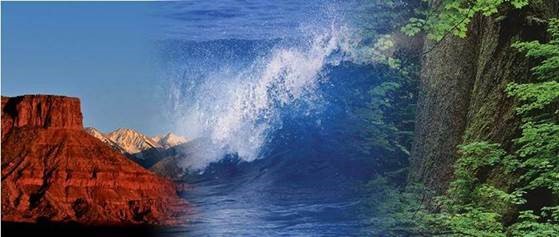
Faculty Publications
Document Type
Article
Abstract
A global compilation of 170 time-averaged volumetric volcanic output rates (Qe) is evaluated in terms of composition and petrotectonic setting to advance the understanding of long-term rates of magma generation and eruption on Earth. Repose periods between successive eruptions at a given site and intrusive:extrusive ratios were compiled for selected volcanic centers where long-term (>104 years) data were available. More silicic compositions, rhyolites and andesites, have a more limited range of eruption rates than basalts. Even when high Qe values contributed by flood basalts (9 ± 2 10[1]1 km3/yr) are removed, there is a trend in decreasing average Qe with lava composition from basaltic eruptions (2.6 ± 1.0 10[1]2 km3/yr) to andesites (2.3 ± 0.8 10[1]3 km3/yr) and rhyolites (4.0 ± 1.4 10[1]3 km3/yr). This trend is also seen in the difference between oceanic and continental settings, as eruptions on oceanic crust tend to be predominately basaltic. All of the volcanoes occurring in oceanic settings fail to have statistically different mean Qe and have an overall average of 2.8 ± 0.4 10[1]2 km3/yr, excluding flood basalts. Likewise, all of the volcanoes on continental crust also fail to have statistically different mean Qe and have an overall average of 4.4 ± 0.8 10[1]3 km3/yr. Flood basalts also form a distinctive class with an average Qe nearly two orders of magnitude higher than any other class. However, we have found no systematic evidence linking increased intrusive:extrusive ratios with lower volcanic rates. A simple heat balance analysis suggests that the preponderance of volcanic systems must be open magmatic systems with respect to heat and matter transport in order to maintain eruptible magma at shallow depth throughout the observed lifetime of the volcano. The empirical upper limit of
10[1]2 km3/yr for magma eruption rate in systems with relatively high intrusive:extrusive ratios may be a consequence of the fundamental parameters governing rates of melt generation (e.g., subsolidus isentropic decompression, hydration due to slab dehydration and heat transfer between underplated magma and the overlying crust) in the Earth.
Publication Info
Published in Geochemistry, Geophysics, Geosystems, Volume 7, Issue 3, 2006, pages 1-20.
Rights
White, S. M., Crisp, J. A., & Spera, F. J. (2006). Long-term volumetric eruption rates and magma budgets. Geochemistry, Geophysics, Geosystems, 7 (3), 1-20.
© Geochemistry, Geophysics, Geosystems 2006, American Geophysical Union

